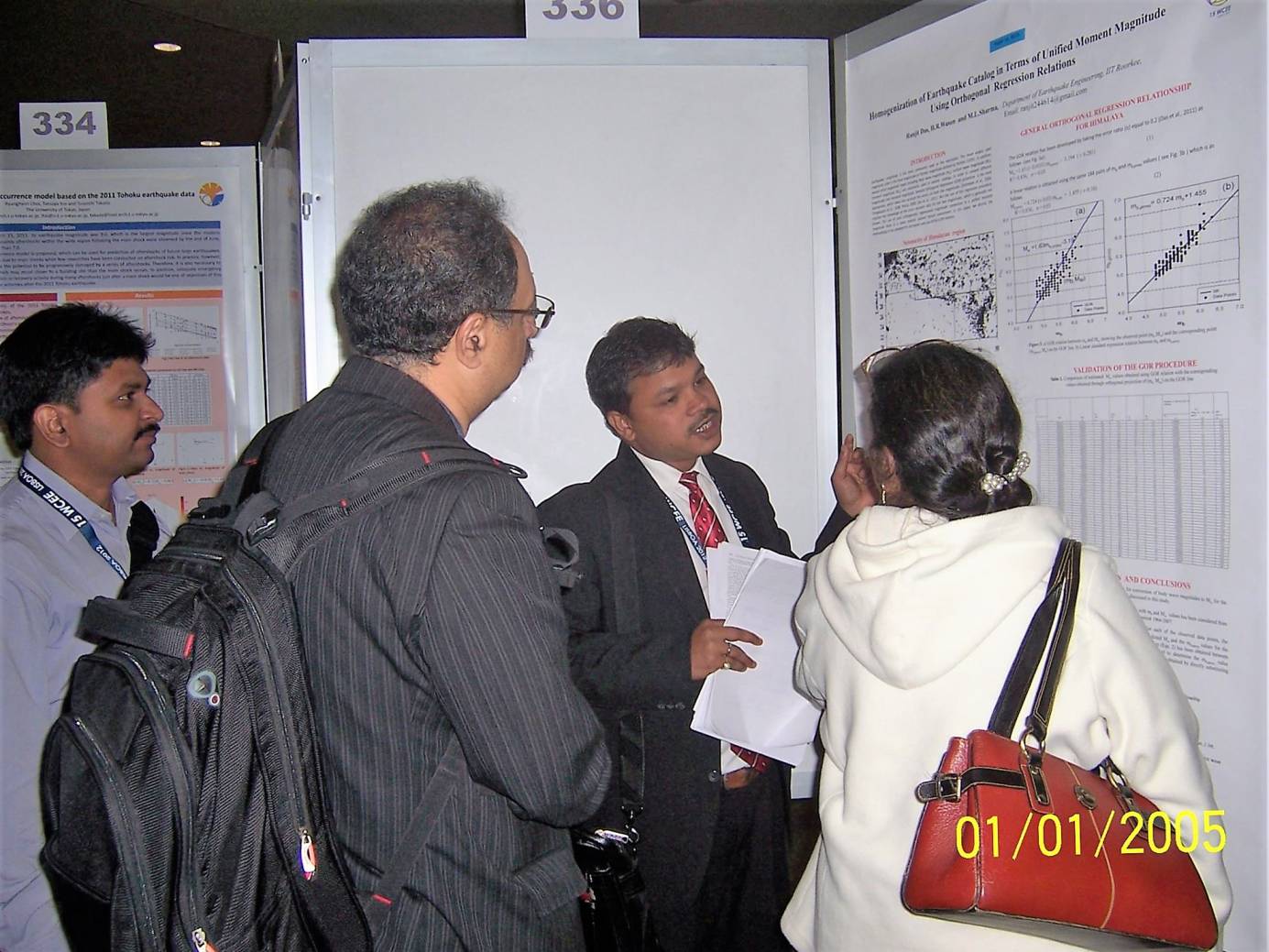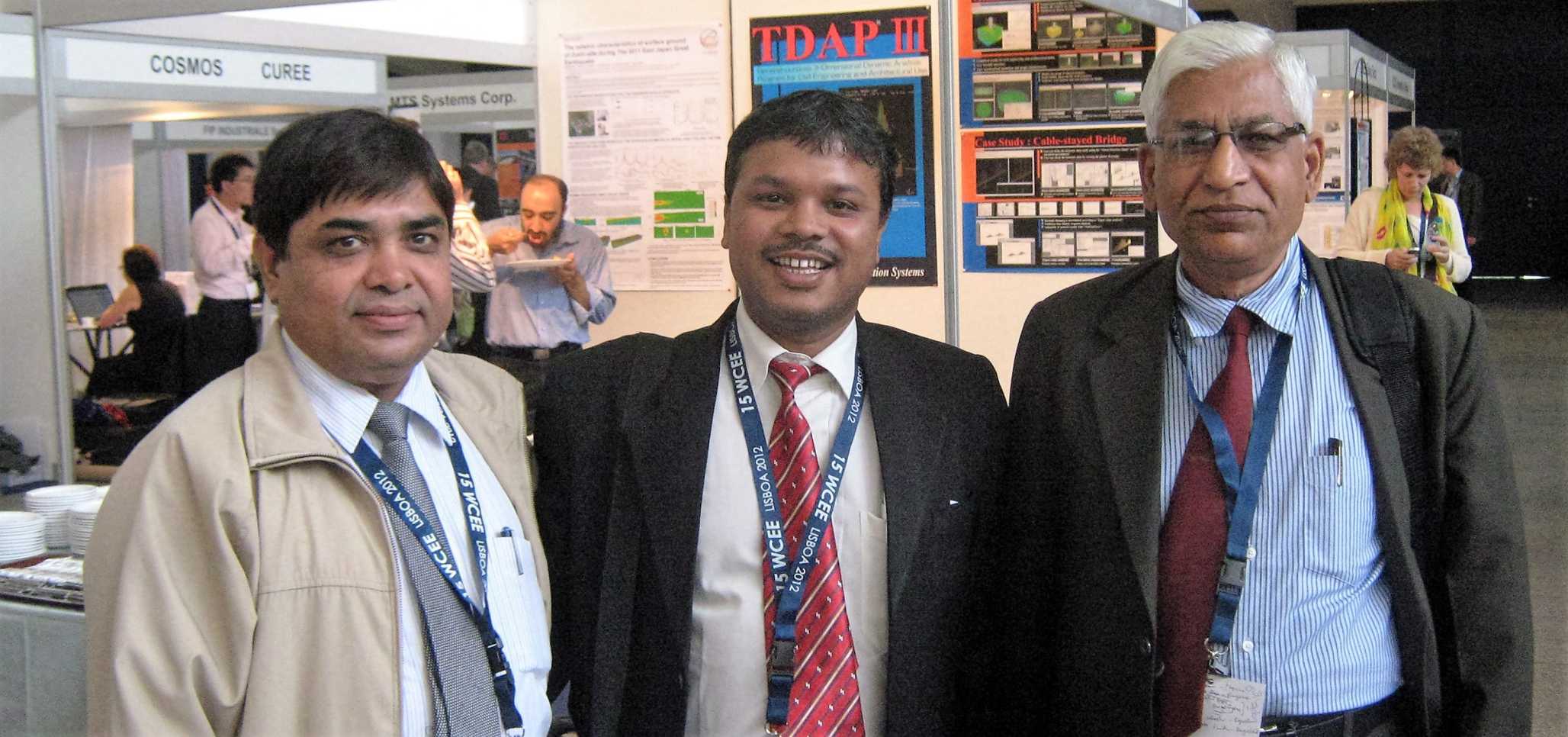Growing up in Northeast India, earthquakes had always been a part of Dr Ranjit Das’ life. His quest to understand the occurrence of earthquakes made him a scientist. Finally, at the age of 40, this Bengali boy, originally from Assam, invented a new scale that measures earthquakes which came to be known as the Das Magnitude Scale (Mwg). It replaces the 84-year-old Richter scale introduced in 1935.
The Indian geophysics scientist made a Physics-based earthquake measuring system with a greater degree of accuracy than the American scientist Charles Francis Richter’s ‘localised’ creation. The Mwg is a fundamental contribution to understanding the physics of earthquakes and the tectonic processes that cause them.
Based on the data collected from 25,708 global earthquakes at the International Seismological Centre and Global Centroid Moment Tensor between 1976 and 2006, the Das Magnitude Scale has been scientifically validated in August 2019.

This earthquake scientist has travelled a long distance from a small town in Assam to the South American country where he now lives in Chile. He works with the National Research Center for Integrated Natural Disaster Management (CIGIDEN) in Santiago, Chile. He also teaches in the Universidad Catolica del Norte in Antofagasta, Chile. Besides he is an Associate Editor of an International Peer Reviewed Journal — Journal of Geophysics.
Thirst for knowledge about earthquakes
Born in Dhekiajuli in the Sonitpur district of Assam, Dr Ranjit, who will turn 42 in May this year, is the sixth child among nine siblings. His father, late Dhirendra Das, left his railways’ job to run a fruit shop close to their residence while his mother, Bedena Das, was a housewife.
After his father’s demise, all the members of the family encouraged him in the “proper direction”. He attributes his success to his two elder brothers — Dhiraj Das and Ranesh Das.
Dr Das completed his schooling in Assamese medium and went on to pursue his B.SC (Physics) from Guwahati University in 2001.

After graduation, he completed his Master of Computer Application from Tezpur University in 2004, followed by M.Tech Computational Seismology from Tezpur University in 2008. It was in the year 2013; he completed his PhD from the Indian Institute of Technology Roorkee (Earthquake Engineering) and went on to finish his Post Doctorate from the Indian Institute of Technology Bombay in 2015.
“As a young boy, I always wondered why earthquakes could not be forecast or controlled. My first formal exposure to seismology, theories of earthquake occurrences, seismic wave propagation, strong ground motion and its damaging effect to buildings, etc. started when I joined M.Tech in Computational Seismology in 2006,” recalls Dr Das.
To catch a tremor
He was among the top 50 to have received the National Doctoral Fellowship (NDF) awarded by the All India Council for Technical Education (AICTE) in 2009, who also received the ‘Young Scientist Award’ from Uttarakhand Government in 2012. He worked with several multinational companies in Bangalore as a Research & Development Specialist before moving to Chile in August 2016.
According to him, Chile is one of the highest seismic areas in the world experiencing frequent moderate to intermediate magnitude events. He chose Chile for doing earthquake research because major earthquakes strike the area every 12-15 years.

Being a life member of the Indian Society of Earthquake Technology, Dr Das has made 22-peer reviewed high impact factor scientific publications. He also made several basic algorithms useful for science and engineering. He also was a member of the Seismological Society of America and American Geophysical Union.
To correctly represent the earthquake size since 1935, a number of scientists devoted their valuable time to the task. In 1979, Japanese seismologist Hiroo Kanamori and his American counterpart, Thomas C. Hanks, developed another version of measure called (Moment magnitude or Mw) to replace the Richter scale but it had its own limitations.
Talking to The Better India over a phone interview, Dr Das states that the Mwg scale will play an important role in emergency management because it is possible to estimate quick seismic moments from the first few cycles of P-waves. This scale is very closely related to seismic energy and earthquake damage potential.
“Mwg has a significant bearing on hazard mapping in seismic zones such as the Himalayan belt where a major earthquake is due but cannot be pinpointed,” the inventor mentions, “Furthermore, this scale will help us in preparing a strong national building code.”
However, recently, an earthquake measuring 6.2 magnitudes claimed 105 lives in Indonesia on 15 January 2021. When asked why his scale has not been used or recognised worldwide, he says, “Recognition in the public domain takes a long time. Only a few people know about the Mwg scale because of the popularity of the Richter scale. However, most of the scientific community is aware of all these updates and developments.”
On a lighter note, Dr Das, who mentions he can speak and write Bengali, Assamese, Hindi, English and a bit of Spanish, says he likes to relax by playing Chess with his friends. Our discussions end with Dr Das mentioning how he intends to come back to India, someday, and work for the development of his nation in the field of education.
If you would like to know more about Dr Das’ work, you may contact him at ranjit244614@gmail.com.
(Written by: Partho Burman; Edited by Yoshita Rao)
No comments:
Post a Comment